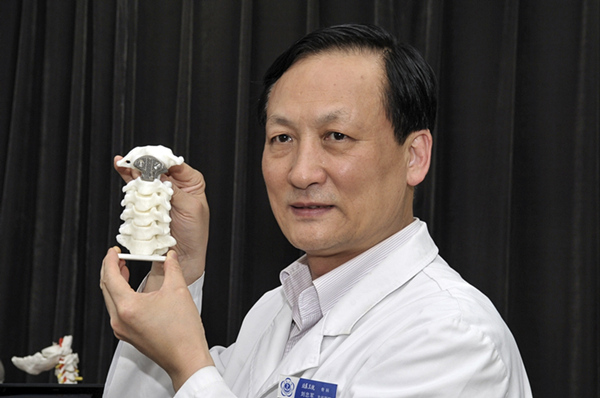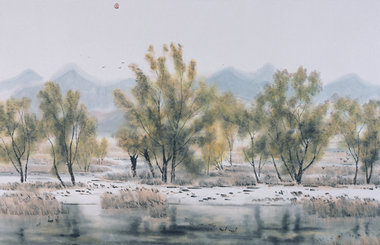A new way to treat diseases
By Yang Yang ( China Daily ) Updated: 2015-03-07 07:56:18
 |
|
Peking University Third Hospital completed China's first 3-D printed cervical vertebral to cure related tumor. Photo provided to China Daily |
3-D printing technology can be used to print models of organs or arteries based on data from a CT scan, Lin says. "Doctors can better understand the situation, and they can better communicate with patients. Operation time will be shortened," Lin says.
In some major surgeries - such as those on important organs like the heart, liver, kidney or other major arteries - doctors can sometimes only tell the severity of the disease after they begin operating.
Likewise, when using prosthetics, doctors don't know for sure whether the piece will fit until they attempt to implant it during surgery. Sometimes, prosthetics are modified during an operation. But this is risky, and can make operations longer and threaten patients' health.
Materials that are biocompatible with the human body should be used in 3-D printed models such as artificial joints. In some cases, such as when a patient is recovering from a serious injury, materials that are capable of being absorbed into the body should be used, Lin says.
For example, he says, if a person suffers a serious injury and loses a part of a bone, doctors will implant a tissue-engineering scaffold around the bone to help the bone tissue to regenerate. Bone cells will grow along the scaffold, filling parts of the fractured bone.
The fracture will eventually heal, and the scaffold will gradually disappear over time. "The functional need has a very high requirement for the structure," Lin says.
A porous structure is needed, because the cells need to absorb nutrition through the scaffold and also grow through it, he says. The size of pores cannot be too large or small, in order to ensure that the cells grow properly.
"We have developed a new technique for 3-D printing such scaffolds," Lin says. "Usually, during the 3-D printing process, additive materials will be heated and extruded from the print head, but the products will be solid inside, unable to meet the requirements," Lin said.
|
|
|
|
|
|
|
|

























 Raymond Zhou:
Raymond Zhou: Pauline D Loh:
Pauline D Loh: Hot Pot
Hot Pot Eco China
Eco China China Dream
China Dream China Face
China Face






